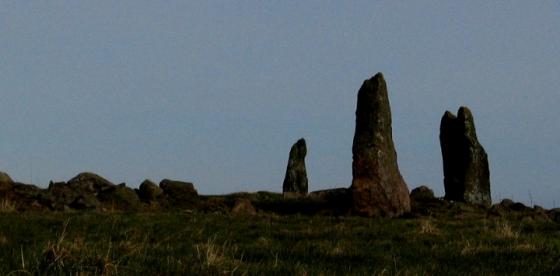
29/04/2012 – Tilquhillie

29/04/2012 – Tilquhillie

29/04/2012 – Tilquhillie

29/04/2012 – The Druid Stone

29/04/2012 – The Druid Stone

29/04/2012 – The Druid Stone

Just a few metres south of the entrance gate to Tilquhillie Castle, in a gap in a dyke, stands this stone, regarded as a possible flanker from the former Tilquhillie Stone Circle. If so, it has clearly been moved from its original position.

The recumbent stone of the former Tilquhillie Stone Circle.

The Druid Stone, the recumbent stone of the former Tilquhillie Stone Circle, discarded on a consumption dyke.
29/04/2012 – Parked in a different spot to Les, mainly because I can’t park a car to save my life. About 700m SE along the road there is a nice spot at the entrance to Cairnshee wood for a car (NO 73129353). Don’t really know what to make of this site. The Druid stone is a good big stone and at the time I felt the second stone didn’t quite look like a good fit for a flanker but it’s hard to tell with them being so far apart. Interesting place, worth a visit. The weather was good today.
January 14, 2012
On a fantastic, sunny, cloudless, frosty morning, I decided on the spur of the moment to take a trip out and visit the stone circles around the village of Banchory. In particular, following the revelations in Great Crowns of Stone, I was keen to visit the remaining stones of the long-destroyed Tilquhillie Stone Circle.
Apparently, this was situated somewhere in one of the two fields southeast of Tilquhillie Castle (itself just over 2 km SE of Banchory). In a dyke running northeast-southwest between the two fields is a huge block known as the Druid Stone, now believed to be the recumbent stone of the former circle.
The second stone, a putative flanker, stands in a gap in a dyke close to the castle. Standing in front of the gate to the castle you will find a field gate to your left. Enter the field, take a few steps, then turn to your right. You will see the dyke just a few metres ahead, as in the photograph.
For more details about the history of this circle, see the RCAHMS link below.
Apparently a lone standing stone, which may or may not be the remains of a circle. One image available.















































































































































































































